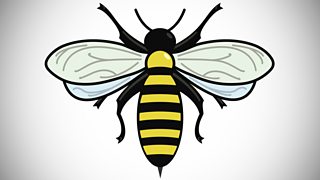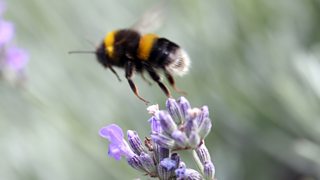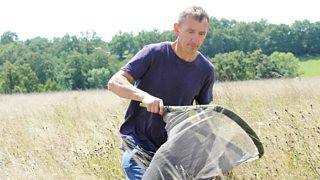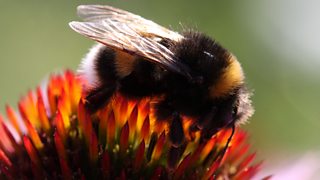Seven things you didn't know about bees
With bee numbers dropping alarmingly worldwide, biologist Dr Thor Hanson extols their virtues, history and necessity in Book of the Week: Buzz. Here Thor lists his seven favourite facts about the industrious invertebrates.
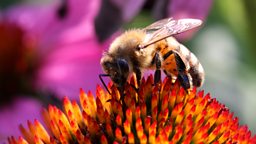
Bees evolved from wasps
Bees evolved from wasps and they still look a lot like them, which is why the two groups are often confused. But if you are being harassed at a picnic by insects that swarm around the ham and fried chicken, then don’t blame bees. Your attackers are most certainly wasps, because the key innovation that led to bees was dietary. Where wasps are hunters and scavengers, bees are vegetarians, feeding themselves and their offspring entirely on the nectar and pollen found in flowers.
Most bees don’t make honey
Everyone knows that honeybees live in hives, with thousands of workers busy turning flower nectar into their syrupy namesake. But the vast majority of the world’s 20,000 bee species are solitary creatures, provisioning their simple nests with a taffy-like mixture of nectar and pollen known as “bee bread.”
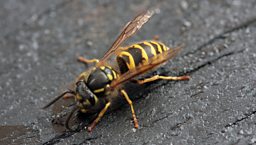
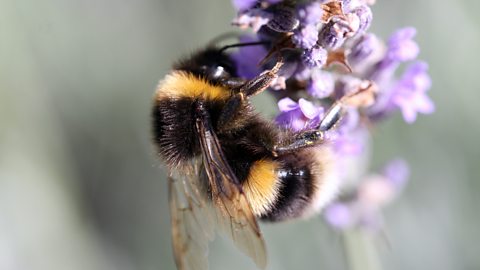
The orchid's deception
Dr Thor Hanson on how flowers hoodwink bumble bees. Read by Elliot Levey.
Bees have five eyes
Look closely at the head of a bee and you’ll see three tiny nubs like glassy marbles perched high between their large, faceted eyes. Though incapable of forming images, these “ocelli” track patterns of light intensity and polarization that help bees navigate, particularly at dusk.
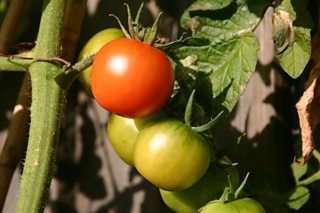
Bees can vibrate like tuning forks
Some flowers, like tomatoes and heather, keep their pollen in closed chambers accessible only by a small hole in the end. When bumblebees visit, they vibrate their wing muscles at just the right pitch, causing the chamber to resonate and spray pollen out onto their fuzzy bodies.
Bees can’t see red, but they do see ultraviolet
For bees, the visible spectrum stops somewhere in the yellower shades of orange, but they can often still recognize red flowers by their shape and smell. Things get more interesting at the other end of the spectrum, where bee vision dips into the ultraviolet wavelengths. This opens up a hidden language of attraction writ large on the petals of flowers. What we perceive as the uniform yellow of a dandelion looks quite different to a bee – rich and luminous at the center, where yellow pigments combine with ultraviolet to produce a shade referred to as “bee purple.” This combination and many others occur on the blossoms of more than a quarter of all flowering plants studied to date.
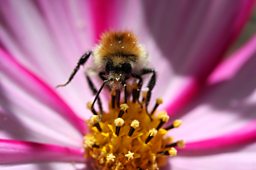
Bees like it hot
Peak bee diversity occurs in deserts and arid shrublands like the American Southwest, the Eastern Mediterranean and parts of South Africa. Though flowering seasons may be brief, arid conditions provide lots of bare ground for nesting, and help stave off the fungal infections that afflict bees in wetter habitats.
In a world without bees our diet would be pretty dull, and probably not very nutritious.
Bees made your breakfast (and lunch, and dinner)
While they might not be in the kitchen cooking the food, bees play a role in nearly every meal we eat. Over 150 food crops require or benefit from bee pollination – not only the obvious fruits and vegetables but also spices, herbs, sweeteners, oils, colourings, emulsifiers and more. While we could still eat meat and wind-pollinated grains in a world without bees, our diet would be pretty dull, and probably not very nutritious.
Bees on 4
-
![]()
Listen to Dr Thor Hanson's book on the nature and necessity of bees.
-
![]()
Four in 4: Why bees are better off living in cities
Strange but true.
-
![]()
Dave and Jim discuss the balance between conserving nature and feeding people.
-
![]()
Are humans and bees so different?
